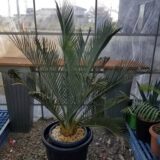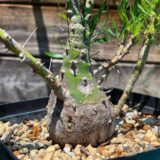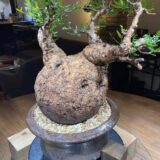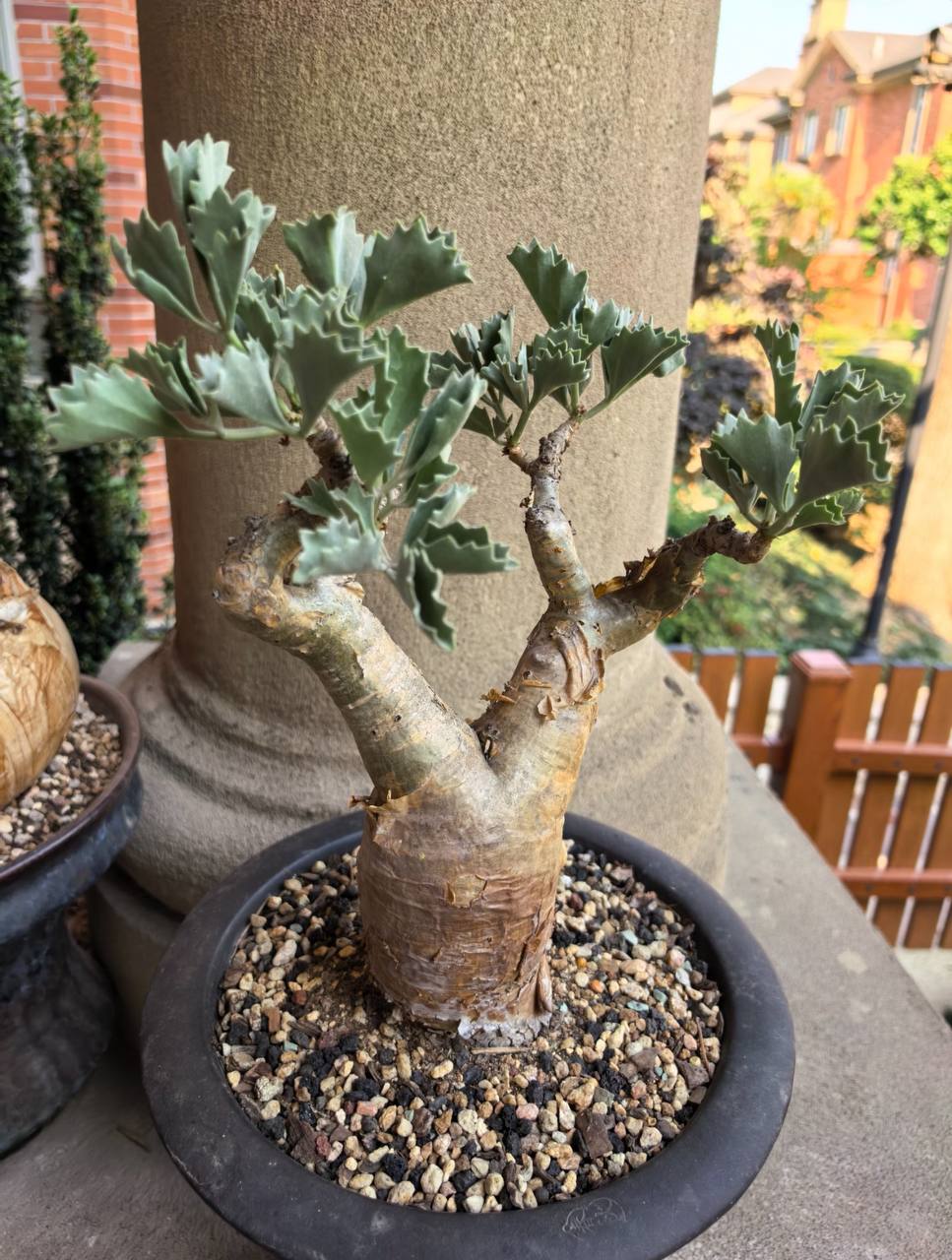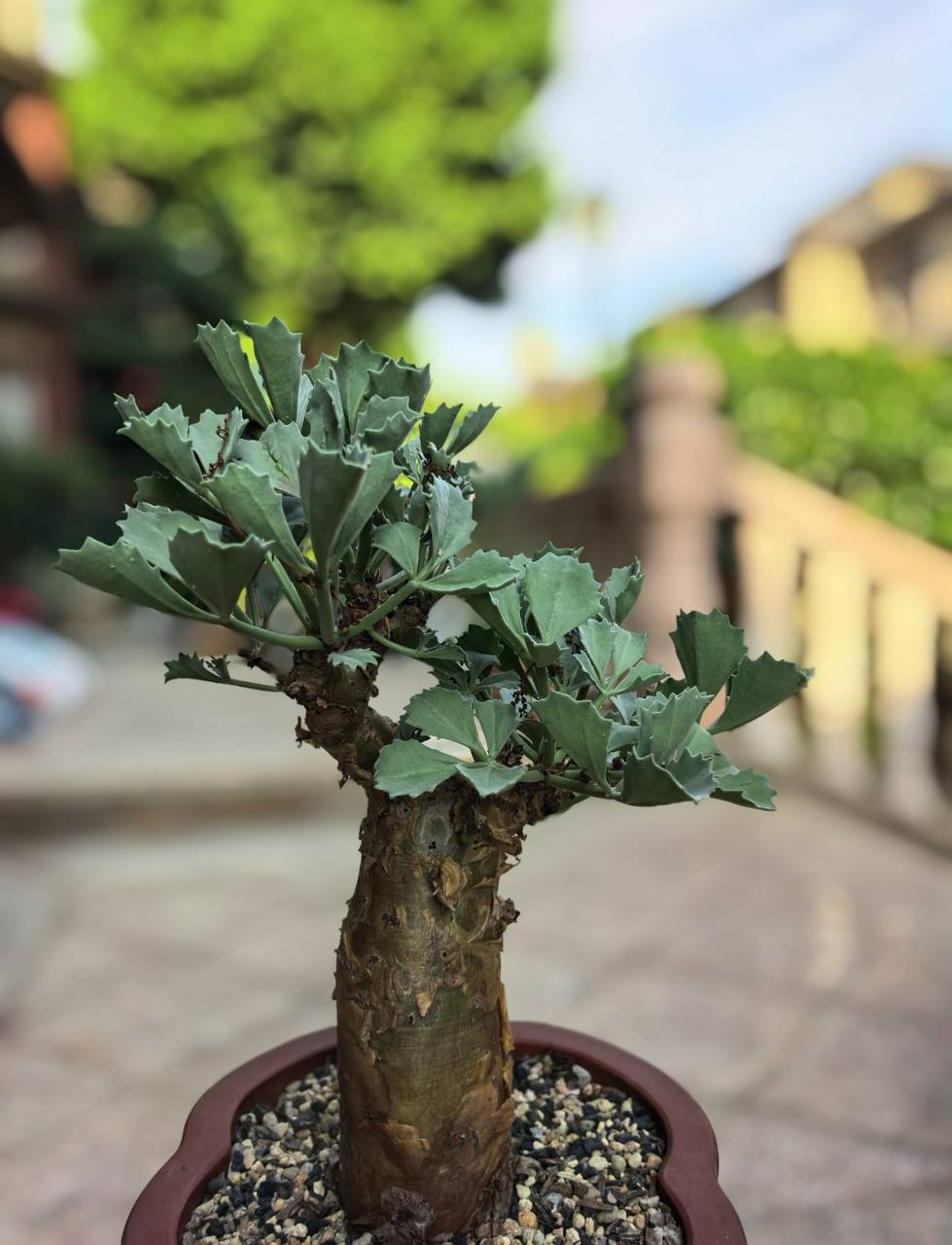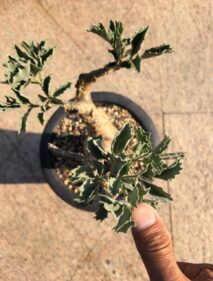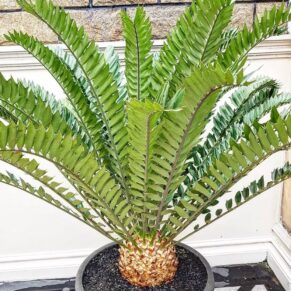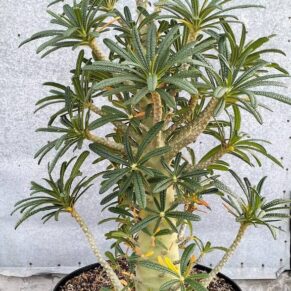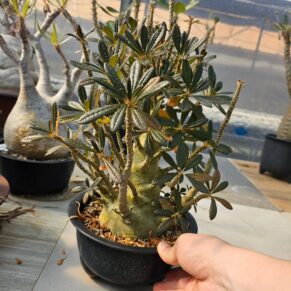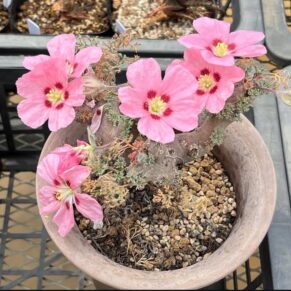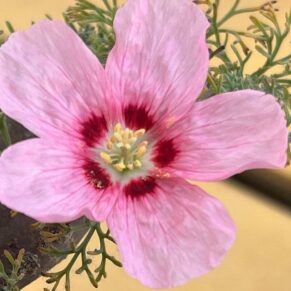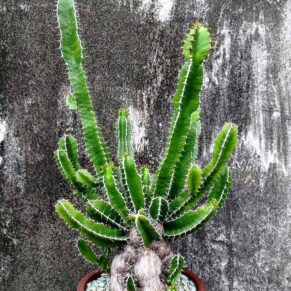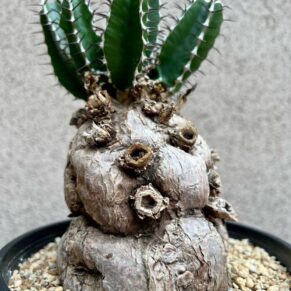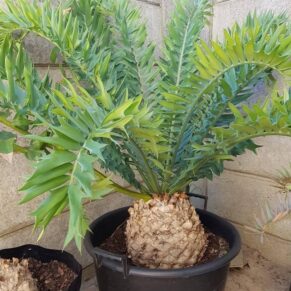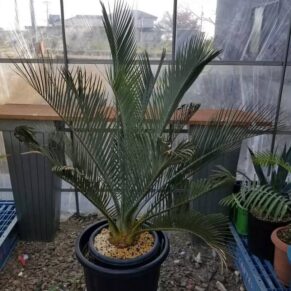Total $150.00
🌱 Cyphostemma bertiforme: A Majestic Caudiciform Succulent
1. Introduction to Cyphostemma bertiforme
Cyphostemma bertiforme—formerly known as Cissus betaeformis—is an extraordinary caudiciform succulent belonging to the grapevine family (Vitaceae). Native to arid regions of southeastern Ethiopia, northeastern Kenya, and Somalia, it thrives in desert and dry shrubland ecosystems.Join our facebook group
Over centuries, plant enthusiasts have admired its striking bulbous caudex, fleshy foliage, and vibrant inflorescences. Today, it stands out as a collector’s favorite, blending sculptural form with resilience.Shop here
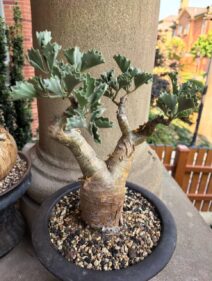
2. Botanical Profile: Why It Stands Out
2.1 Morphology & Growth Habit
Characterized as a succulent shrub, C. bertiforme develops a flask‑ or bottle‑shaped caudex up to 1 m tall, cloaked in papery yellowish‑white bark that peels in thin strips—forming a unique sculpture of age and texture .The plant exhibits few, sparsely branched stems, each topped with clusters of fleshy leaves (simple to 5‑foliolate), measuring 1.5–8 cm long with slightly toothed margins
Flowering generally occurs along puberulous spikes spanning 2–8 cm, with pedicels elongating from ~1 mm to ~4 mm as fruits develop. Tiny calyx lobes cradle glossy yellow to dark red petals (~2 mm long). Once pollinated, the plant produces ellipsoid berries—6–9 × 4–6 mm—initially pubescent, maturing to purple‑red eeds (5–7 × 2–4 × 3–4 mm), marked by median grooves, dorsal tubercles, and distinct ridges 3. Natural Habitat & Conservation
3.1 Native Range
Found in hot semi‑arid savannas at elevations up to 900 m, C. bertiforme adapts to sandy, rocky soils with harsh seasonal climates .Shop
3.2 Conservation Insights
According to recent AERP (2024), this species is not currently threatened, showcasing stable wild population .Shop
4. Why Grow Cyphostemma betiforme.Shop
4.1 Ornamental & Sculptural Value
Its symmetrically swollen stem and contrasting foliage create a dramatic focal point—be it indoor or outdoor arrangements .Shop
4.2 Drought Resilience
Designed by nature to withstand long dry spells, this succulent thrives on minimal watering—perfect for xeriscaping .Shop
4.3 Rare & Collectible
As a niche species with a caudiciform structure, it appeals to collectors aiming to build a distinctive plant portfolio .Shop
5. Cultivation Guide: From Soil to Sun
5.1 Temperature & Light
*Requires
-
Bright light to full sun
-
Warm winter minima: safe down to ~2 °C, though optimal health occurs above 14 °C.Shop
-
Avoid frost; ensure daytime thaw if exposed
5.2 Soil & Containers
Use porous, mineral‑rich substrates (e.g., cactus/succulent mix with coarse sand/peat). Ideal pH: 6.0–7.0 .
Terracotta or breathable containers help prevent waterlogging.
5.3 Watering Strategy
Allow soil to dry thoroughly between summer waterings; hold off completely in winter . Overwatering is the primary cause of failure.Shop
5.4 Fertilization
Feed lightly during active growth (spring–summer) with balanced fertilizer; avoid nitrogen-heavy mixes to encourage caudex rather than foliage development
5.5 Pruning & Maintenance
Prune lightly in spring to maintain shape and remove dead wood. Use sterile tools to prevent pathogens.
6. Propagation: Seeds & Cuttings
6.1 Propagation by Seeds
-
Scarify seeds (light sandpaper), soak in ~60 °C water overnight
-
Sow in warm (20–25 °C), moist, well-drained mix
-
Germination typically spans 2–3 weeks, but may be erratic.Shop
6.2 Stem Cuttings (Less Common)
Take firm cuttings, allow to callus, then insert in medium mix. Keep warm and light to encourage rooting.
6.3 Advanced Hydroponic Tips
Reddit users report success with semi-hydro setups:
“I use a container with a hole 20% up the side… water often so it never dries… dilute fertilizer each time… occasionally flush thoroughly.Shop
7. Common Cultivation Challenges
-
Root rot: caused by overwatering
-
Cold stress: below 2 °C can harm the plant
-
Slow seed germination: requires patience and scarification
8. Landscaping & Design Applications
Ideal as a centerpiece in succulent gardens or desert-themed landscapes. Its architectural form blends well with gravel, rocks, and sparse planting schemes. Grown indoors, it makes a striking focal plant in sunny windows or conservatories.Shop
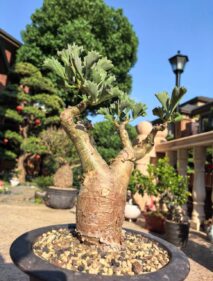
9. Care FAQs
| Question | Answer |
|---|---|
| Minimum winter temperature? | 14 °C recommended; mature plants tolerate brief dips to ~2 °C .Shop |
| How often to water in summer? | When substrate is fully dry—usually every 10–14 days; varies with climate |
| Can I grow it outdoors? | Yes, in zones that stay above ~5 °C; colder regions require protection or indoor care |
| Propagation difficulty? | Moderately challenging; seeds require treatment and warm conditions |
| Preferred soil mix? | Cactus/succulent mix + coarse sand/peat; ensures excellent drainage |
| Does it flower indoors? | Yes, in strong light—producing small clusters of red/yellow blooms |
10. Related Species & Unique Traits
While C. bertiforme shares traits with other caudiciform Cyphostemma (e.g., C. juttae, C. uter), it’s defined by its distinct flask-shaped caudex and smaller stature.Shop
Some species within the genus use extrafloral nectaries—tiny, glandular structures that attract insects for defense/pollination.Shop
11. Buy, Grow, & Showcase
Seeds and plantlets are available from specialist nurseries like Lifestyle Seeds—harvested in Somalia—as well as rare‑plant sellers worldwide .
For budding collectors, begin with seed propagation, and once established, showcase mature specimens in prominent settings to highlight the sculptural trunk.
12. Conservation & Ethical Collecting
-
Always purchase from ethical growers.
-
Do not harvest wild specimens; C. bertiforme is not endangered, but wild collection damages habitats.
-
Recommend ex-situ cultivation to build conservation stocks.Shop
13. References & Further Reading
-
Kew’s Plants of the World Online: Botanical details & geographical data.Shop
-
Flora of Somalia & Tropical East Africa: authoritative morphological and ecological descriptions.Shop
-
Cactus Francophone: cultivation insights and substrate recommendations.Shop
-
Botanikks: soil mix, pH, watering & fertilizing guidelines.Shop
-
Lifestyle Seeds: product description and sourcing
-
Reddit insights: community-tested strategies.Shop
-

cyphostemma bertiforme
Conclusion
This comprehensive overview positions cyphostemma bertiforme as an exceptional specimen—bronzing both form and function. With detailed care insights, propagation tips, and styling advice, your site will rank strongly for the keyword cyphostemma bertiforme, engaging both enthusiasts and casual browsers..Shop

